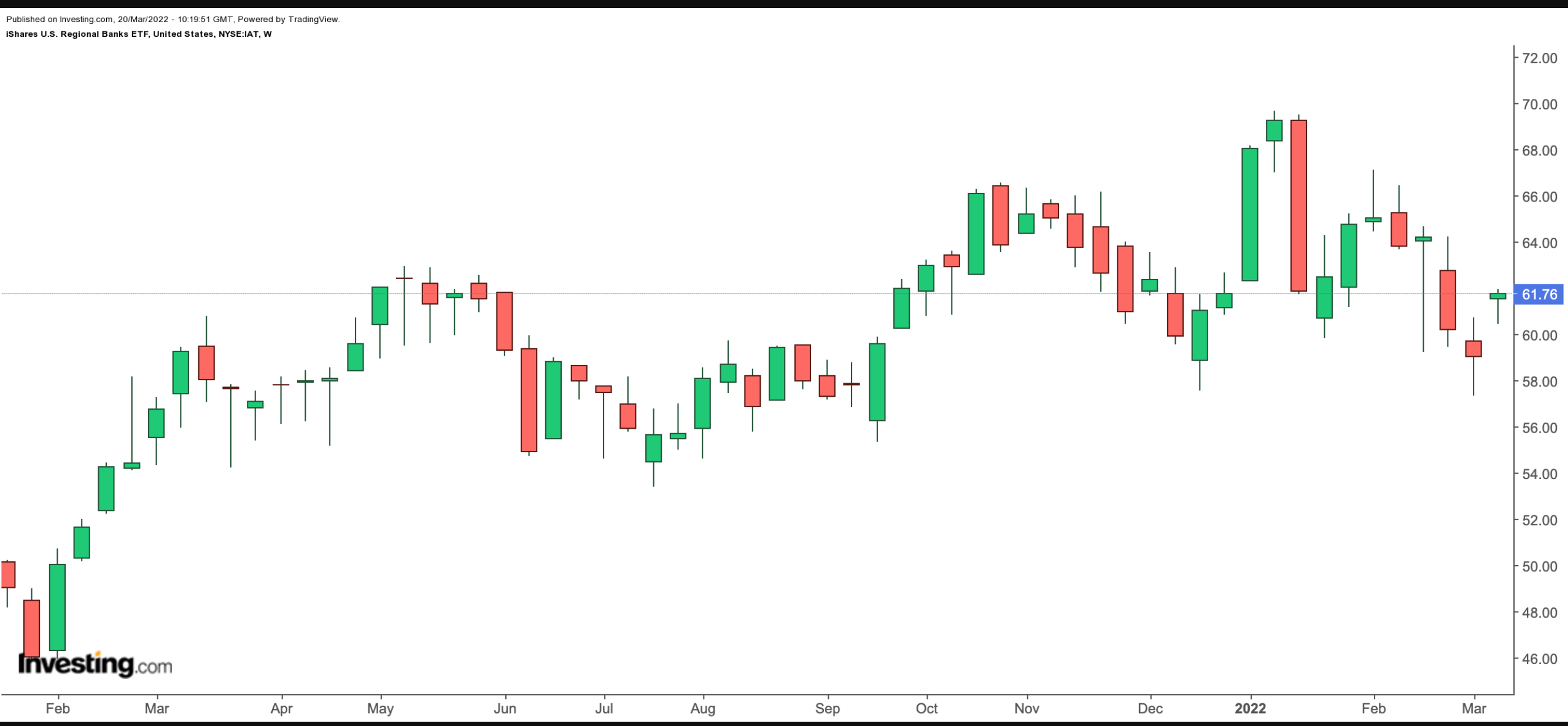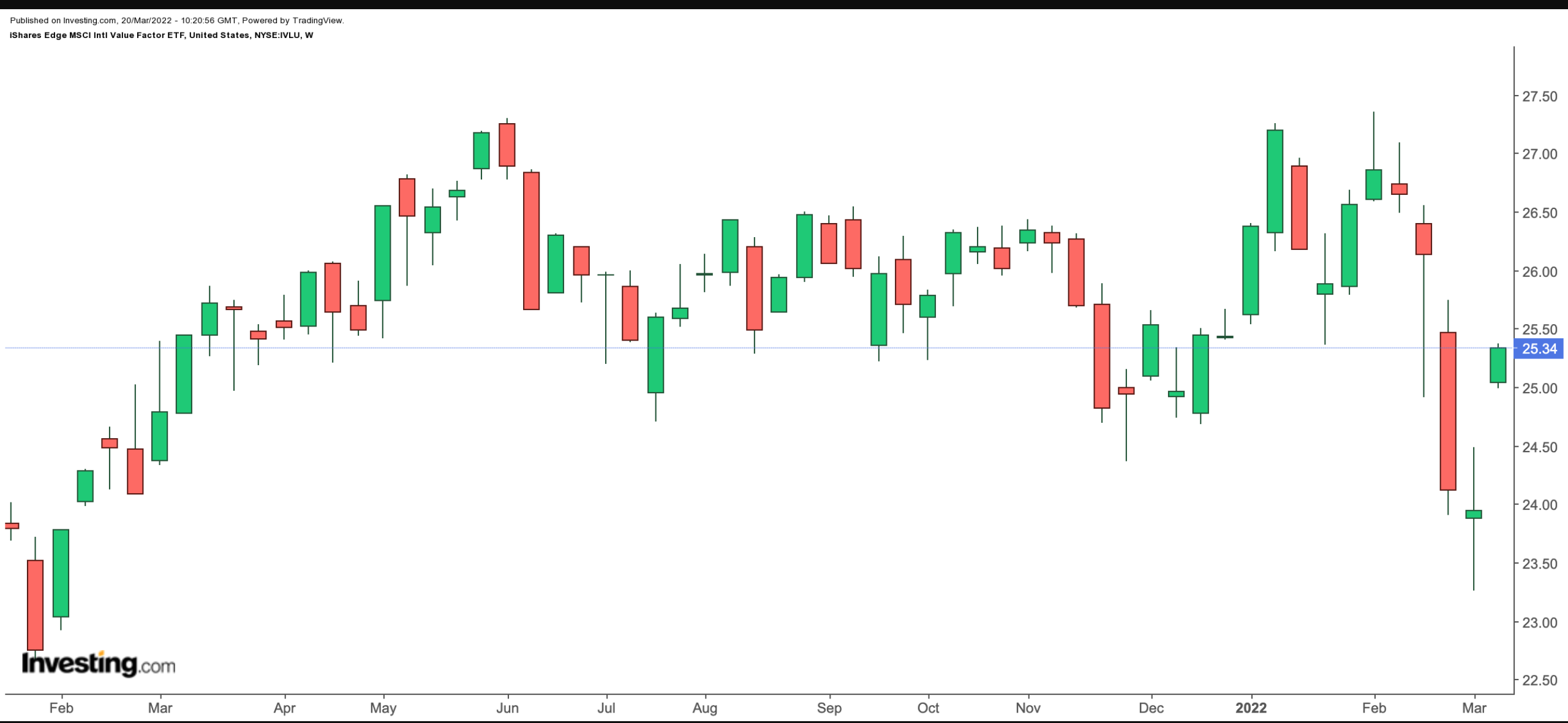InvestingPro’s Fair Value model captures 63% gain in Steelcase ahead of acquisition
Interest rates in the US are going up. The country's red-hot inflation level has prompted the Federal Reserve to step in to achieve its dual mandate of "price stability and maximum sustainable employment.”
Price stability means the Fed would like to see annual inflation at a stable rate of 2%. However, at present, the 12-month Consumer Price Index (CPI) inflation rate is at its highest level since the 1990s.
Therefore, on Mar. 16, the US central bank increased interest rates by a quarter percent for the first time since 2018. The Federal Open Market Committee (FOMC) release that accompanied the hike noted:
“Inflation remains elevated, reflecting supply and demand imbalances related to the pandemic, higher energy prices, and broader price pressures.”
Fed officials also expressed concern over the potential economic and inflationary implications of the Russian invasion of Ukraine. Thus, we are likely to see six more rate hikes in 2022. Put another way, Wall Street expects ambitious and focused steps from the country's monetary policymakers to curb inflation in the rest of the year.
As a result, borrowing costs for companies and individuals will increase significantly. Therefore, investors are looking for asset classes and sectors that could do well in the new higher-interest rate environment.
Today’s article introduces two exchange-traded funds (ETFs) that could appeal to a range of readers. Both funds are offered by BlackRock (NYSE:BLK), the most prominent ETF provider worldwide.
1. iShares U.S. Regional Banks ETF
- Current Price: $61.76
- 52-week range: $53.41 - $69.71
- Dividend yield: 1.88%
- Expense ratio: 0.41% per year
During periods of rising interest rates, Wall Street focuses on the financial sector. Banks understandably charge higher rates for revolving-credit lines and mortgages they offer.
Meanwhile deposit rates for savers do not typically budge as much. As a result, their net interest margins increase.
Moreover, in part due to the level of fiscal stimulus during the pandemic, banks have not reported a large increase in non-performing loans (NPLs). Therefore, bad loan losses are not likely to weigh on profits in future months.
Our first fund, the iShares U.S. Regional Banks ETF (NYSE:IAT), invests in US regional banks that could benefit from higher interest rates. The fund was first listed in May 2006.

IAT, which tracks the Dow Jones US Select Regional Banks Index, has 39 holdings. With regards to sub-sectors, we see regional banks (87.07%), diversified banks (11.69%), and thrifts & mortgage finance (0.94%), among others.
Meanwhile, the top 10 stocks in the portfolio account for close to 63% of $1.45 billion in net assets. Those leading holdings include PNC Financial Services (NYSE:PNC), Truist Financial (NYSE:TFC), U.S. Bancorp (NYSE:USB), SVB Financial Group (NASDAQ:SIVB), and Fifth Third Bancorp (NASDAQ:FITB).
IAT is up 4.9% in the past year, and hit a record high in early January. Since then, however, shares in the ETF have come under pressure, and the fund has lost roughly 11% of its value.
Trailing P/E and P/B ratios are 12.99x and 1.53x, respectively. Buy-and-hold investors could consider buying IAT at around current levels.
2. iShares Edge MSCI International Value Factor ETF
- Current Price: $25.34
- 52-week range: $23.26 - $27.36
- Dividend yield: 3.27%
- Expense ratio: 0.30% per year
US-based investors concerned about the potential trickle-down effects of rising interest rates, could also research global shares.
The iShares MSCI International Value Factor ETF (NYSE:IVLU) gives access to international developed-world large- and mid-capitalization (cap) businesses that exhibit value characteristics. In times of uncertainty, market participants typically favor value stocks for their earnings, stable cash flows, dividends as well as their growth potential.

IVLU, which has 346 holdings, tracks the MSCI World ex USA Enhanced Value Index. Since its inception in June 2015, assets under management have reached $1.35 billion.
Financial shares have the highest slices with 18.57%. Next up are industrials (15.90%), health care (11.65%), consumer discretionary (10.20%), consumer staples (9.90%), IT (9.12%) and materials (8.78%). Around a fifth of the portfolio is in the leading 10 stocks.
In terms of geographic breakdown, over a third of the names in IVLU come from Japan. We then have companies from the U.K. (17.13%), France (10.91%), Germany (8.37%), Switzerland (5.48%) and Italy (3.63%) among others.
Among these are British American Tobacco (NYSE:BTI); Toyota Motor (NYSE:TM); pharma heavyweights Novartis (NYSE:NVS) and Sanofi (NASDAQ:SNY); and oil major Shell (NYSE:SHEL).
IVLU has lost 1.48% in the past year and 0.40% year-to-date. Trailing P/E and P/B ratios stand at 10.10x and 1.02x respectively. Readers interested in global shares trading at a significant discount to intrinsic value should do further due diligence on IVLU.
